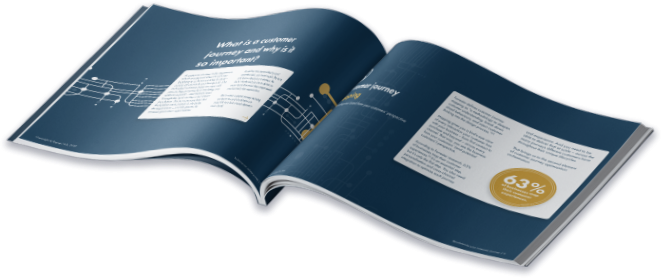The customer experience (CX) dream is to be able to tailor your approach for each individual, offering them a hyper-personalised and seamless journey to whatever they’re trying to achieve.
Too often, that feels like a pipe dream – because of legacy systems, disparate data sources, proliferating touchpoints and increasingly complex, non-linear journeys.
But can the dream be a reality?
Yes – thanks to orchestration. In this blog, we look at 3 different types of orchestration: customer data, journeys and channels and how they help you to deliver that seamlessness at scale (and at a reasonable cost).
Data orchestration: Create a single view by connecting all data sources and systems
You can’t create a seamless, consistent CX without centralising your data. You need that single version of the truth that combines inputs from a wide range of sources and formats, such as devices, channel preferences, opt-ins, consents, behaviour, location and more. It should also connect all your customer touchpoints – online, offline, third-party – in real-time.
This data orchestration gives you a robust foundation for delivering personalised experiences based on customers’ individual interactions with your brand.
Journey orchestration: Coordinate and automate ideal customer experiences
Data orchestration simplifies your data feeds and is therefore the crucial first set in creating a seamless CX. Once you have that data foundation, you can deliver the ideal experience for each customer.
That’s where you need journey orchestration. Forrester defines journey orchestration as “Using real-time data at the individual customer level to analyse current behaviour (journey discovery) and predict and adjust future behaviour in the moment (journey decisioning).” In short, journey orchestration involves coordinating the ideal journeys for each customer. It goes a step further than standard customer journey mapping because it also involves automation, meaning you can deliver personalisation in real time at scale.
For example, you can use journey orchestration to reduce friction by ensuring people have exactly the right information and UX approach for their situation at each moment in time. Another use case involves predicting future behaviour, working proactively to deliver the next best action or experience.
As it’s all automated, you’re delivering these ideal experiences while streamlining internal processes, which also leads to greater operational efficiency.
Importantly, you can also monitor KPIs to measure business impact. These could be traditional metrics, such as Net Promoter Score, churn rates and customer and employee satisfaction. But it also makes it easier to integrate financials, for example by monitoring revenue from the new upsell opportunities that your orchestration programme creates. You therefore have a clear path to demonstrating ROI.
Channel orchestration: Deliver a multi-channel CX without data silos
Now you have the power to coordinate and automate the ideal customer journeys, you need to avoid one common mistake: channel silos.
We often see this with Chatbots. An organisation will implement Chatbots across SMS, voice, email, WhatsApp, web, Facebook Messenger, RCS and more. But those channels don’t talk to each other, leaving the customer unrecognised. As a result, customers have to retell their story each time they use a new channel, because the web Chatbot doesn’t know what was said to the WhatsApp one. You’ve therefore introduced new frustrations just as you’re trying to ease friction.
Channel orchestration delivers the integration you need across digital self-service. You essentially have a single Chatbot deployed across whatever channel you want to offer – with access to all the back-end systems required to answer queries. Another key benefit is that artificial intelligence and machine learning drive continuous improvement across all channels at once, so you’re constantly delivering more value to customers. That way, you’re offering the ultimate convenience based on the reality of customers’ daily behaviour.
Analyse, optimise and orchestrate seamless customer journeys
Once you have the orchestration in place, you need to analyse which touchpoints and channels are working and where bottlenecks are.
Engage Hub’s Customer Journey Tracker makes this easy. It visualises the sequence of customer interactions in real-time across all offline and online channels, no matter how convoluted their journey. This empowers you to make evidence-based decisions on how to streamline CX even further, so you can maximise return on your investment – in terms of both revenue generation and customer satisfaction.
What to see Customer Journey Tracker in action? Get in touch to book a demo. Learn more about orchestration in our recent whitepaper.

